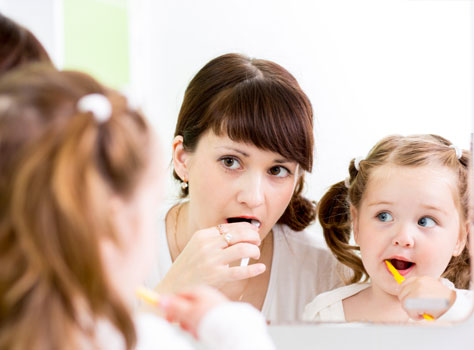Children can start getting their permanent adult teeth around five or six years old, so it’s important that they learn how to properly care for their teeth from an early age. Here’s why brushing and flossing regularly is an excellent step in preventive oral health care and how to make this habit something they can look forward to.
Why brush and floss regularly?
Brushing prevents the buildup of plaque, which is the fuzzy feeling film of bacteria that forms on teeth. Bacteria thrive on the residual sugars from eating or drinking and produce acid that can eventually lead to tooth decay and gum disease (gingivitis). These are two of the most common dental problems in children.
What’s worse is that tooth decay can then further develop into cavities, tooth pain, and early tooth loss. In more severe cases, a decaying tooth can be a gateway for bacteria to enter the surrounding tissue and form an abscess. Gum disease occurs when the bacteria on the teeth infect the gums and cause them to become red and swollen.
These symptoms can be distracting and have a negative effect on your child’s schooling and sleep. However, they are generally easy to prevent with morning and nightly brushing, daily flossing, and rinsing out the mouth with water often.
How to making brushing fun for young children
It’s best to teach your children the correct methods of brushing so that they do not damage their teeth or gums and to ensure adequate cleaning of the gums, teeth, and tongue.
Unfortunately, children don’t often jump for joy at the thought of cleaning their teeth, but it is possible to engage them with fun teeth-brushing activities such as:
1 An oldie but a goodie is demonstrating how brushing removes plaque from teeth. At the pharmacy or your dentist’s office, ask for colored dissolving tablets for kids to chew and then have them brush to see the places they miss.
2 Make it a fun competition to see who can make the most “bubbles” with toothpaste.
3 Lead by example and stand side by side with your child and brush your teeth together. Better yet, have your child mimic whatever you are doing and then reverse the role.
4 Proper brushing technique includes gently brushing in small circles rather than scrubbing from side to side or up and down. This takes gross motor skills to accomplish, but with a little practice a child can outline circles. Make it fun by associating it with a round object, like a car wheel.
Although children should have a dental check-up at least once a year, speak with your dentist to determine what is best for your child. These check-ups help in the early diagnosis and treatment of tooth decay and gum disease, but they also catch more serious oral problems such as incorrect jaw alignment and chewing difficulty, inadequate spacing and teeth crowding, or jaw pain.
Bumrungrad’s pediatric dentistry offers a safe and welcoming environment for children to have their teeth and gums evaluated by caring professionals. We also offer preventative care such as sealants, fluoride treatments, and even pediatric orthodontics that can help correct anomalies and prevent greater complications later in life.
By Dr. Wiwat Leetrakulnumchai, Dentist and Specialist for Pediatric Dentistry at the Dental Center, Bumrungrad Hospital
Editor’s note: This article is sponsored content from Bumrungrad International Hospital, and it is reprinted here with permission of the hospital.














